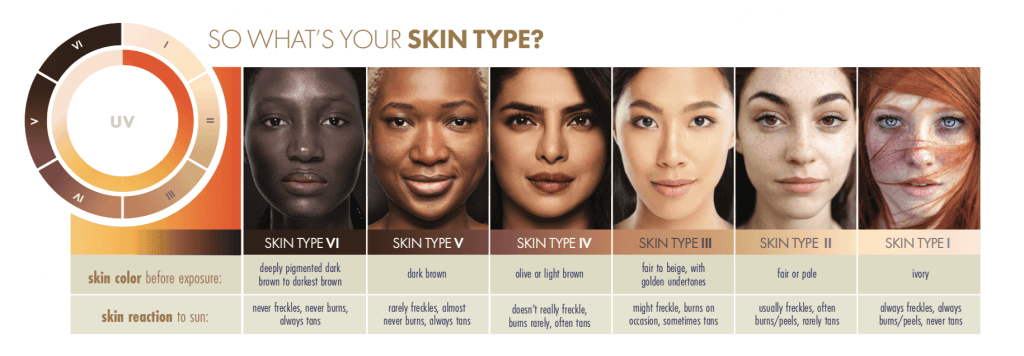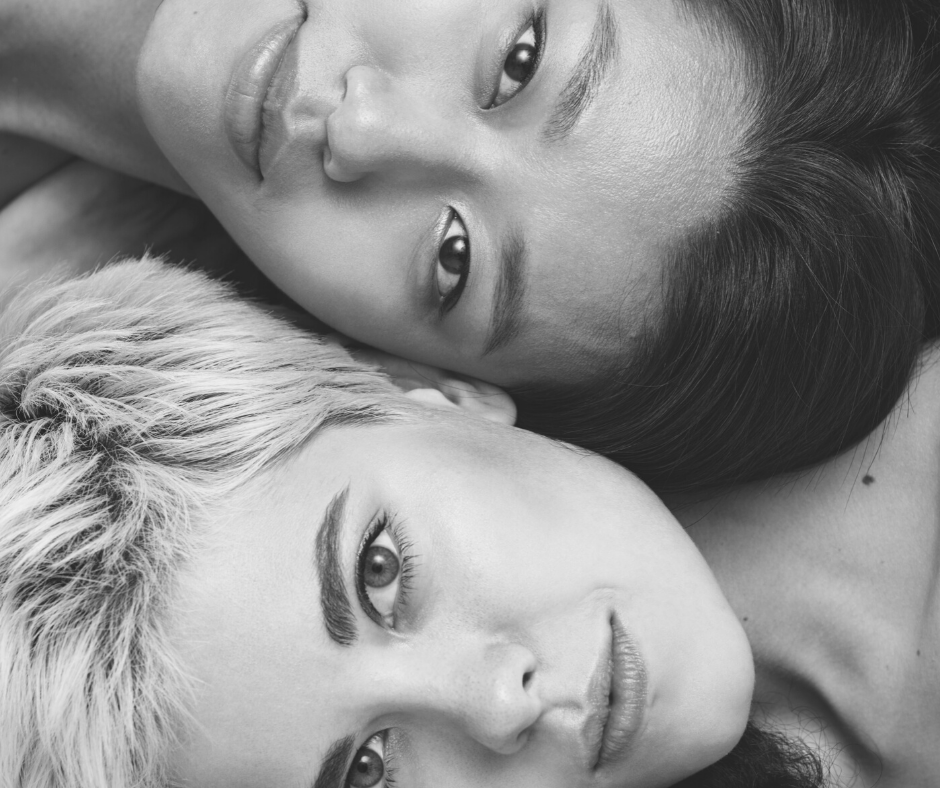Have you ever gone to the store and tried to purchase some skincare, but get so overwhelmed by the different types and uses? Understanding your skin type and colour can be frustrating, especially as skin is constantly changing depending on our environment, age, hormones, and what current products are being used.
The first way to classify skin is by using the Fitzpatrick Scale. Developed in 1975 this is a way to classify skin based on how it reacts to the sun. This scale places the skin in one of six categories, based on how much melanin is present. One being pale skin that burns without tanning & six being darker skin that never burns and only tans.

Note that these 6 categories are just a guide, as some individuals may fall between two.
So, what does the Fitzpatrick Scale mean for me?
Those with lighter Type 1 & 2 skin (often redheads and fair-skinned individuals) should always be wearing a high SPF sunscreen and avoid the sun as much as possible. This is because lighter skin has less melanin, making it more difficult to naturally block harmful rays from the sun. The ability to tan is almost impossible and therefore these skin types are much more sensitive.
An individual with a level 5 or 6 Fitzpatrick skin type would typically be someone with Indian or African heritage. While it is still recommended to use sun protection at all times, these skin types have a much lower risk of developing skin cancers & photo-aging due to the high levels of melanin and the decrease in sensitivity to the sun’s UV rays.
The type of skin you have determines which treatments and products will work best on your skin, and what you should be avoiding. Depending on what Fitzpatrick skin type you are, will determine which medical-grade skin treatments are appropriate. Because those with darker skin types are more able to produce pigment, any skin or pigmentation treatment that uses high levels of heat to induce a response may be risky. For example, certain lasers are not recommended for Fitz skin types 4-6 because the risk of post-inflammatory hyperpigmentation (PIH) is increased. PIH results in the skin producing rebound pigment in response to trauma such as heat. Often this will happen months after the initial trauma. Patients with darker skin types will often need to prep their skin on lightening agents prior to undergoing more intense treatments with products called Tyrosinase Inhibitors.
Beyond the Fitzpatrick Scale, there are 4 common categories for the type of skin you have. Oily, Dry, Combination and Normal. These are most commonly used by skincare and cosmetic companies.
To determine which of these you have, wash your face, don’t apply anything to the skin and wait 2 hours. Your skin may display some of these signs:
Oily Skin - The skin remains oily and shiny all over. Skin tends to be more acne-prone.
Dry Skin - Rough and flaky on the face. The skin feels tight.
Combination - Your t-zone is oily or shiny, but there is some tightness and dryness around the cheeks/jawline
Normal - The skin feels smooth with no excessive dryness or shine.
Depending on where you fall in this category, will guide product choices and the active ingredients which will be most suitable for your skin.
______
Here at Privée, we do a comprehensive assessment of your skin and work with you to address any ongoing issues. Your practitioner will then work with you to suggest safe and effective treatments and at-home products, based on your skin type, to give you the beautiful skin you have always dreamed of.

No comments.